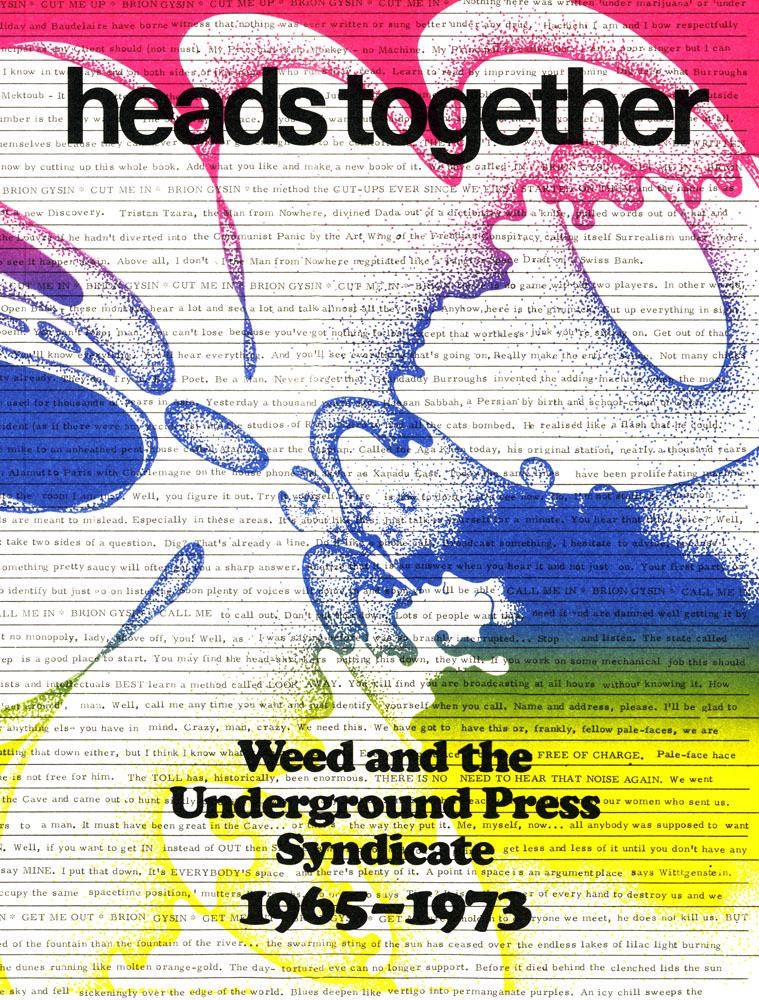HEADS TOGETHER — Weed and the Underground Press Syndicate
with a conversation between editor David Jacob Kramer and Tjebbe van Tijen at 8.30pm and original Underground Papers on display
Thursday June 8, 8pmThe youth uprising, now simply called “The Sixties,” was fed by one of the greatest booms in publishing history. The Underground Press Syndicate (UPS) began as a loose confederation of five papers in 1966, and within a few years swelled to over 500 across the world, reaching millions of readers. They “spread like weed,” said the UPS director, weed-dealer, and eventual founder of High Times, Tom Forcade. The metaphor was apt: the UPS spurred the legalization movement, and weed became its totem.
Weed was so pervasive it became a helpful means for government agencies to crack down on the UPS. Weed came to emblematize activist groups, and added a touch of flair to the mastheads of UPS titles. Weed permeated UPS pages, with gaps in text crammed with weed-inspired “spot illustratios”. Heads Together collects these drawings, shining a light on lesser-known names in the stoner-art canon, and many who weren’t names at all, as no signature was attached. It also compiles guides for growing weed from the period that were treated like contraband by the CIA. Activist-oriented, psychedelic rolling papers are showcased too.
As pot now fast-tracks toward legalization in the U.S. and beyond, its once incendiary status is brought into odd relief. Pot’s profiteers of the corporate market today do not reflect those who fought for legalization, or the Black and Latino populations strategically criminalized for pot well before hippies were targeted, and long after. The art in this book speaks to a time when pot was smoked with optimism, as something potentially good for society and people, capable of activating profound transformation in the face of corrupt and powerful forces.
The evening will feature a conversation between the editor of Heads Together, David Jacob Kramer, and Tjebbe van Tijen in which they will reflect on the history of international radical culture exchange and respond to the material collected in Heads Together.
Tjebbe van Tijen is a Dutch artist, urban activist, archivist and media theorist born in The Hague in 1944. From the early sixties onwards he has been involved in happenings, events, actions and manifestations, often in public space. He has designed exhibition projects about a variety of subjects like urban actions, ecology, alternative culture, visual education and shamanism. He was founder and curator of the Documentation Center of Social Movements at the University Library of Amsterdam 1973-1990 (now at the IISG). Since 1988 he works under the name of Imaginary Museum Projects. He was both engaged in the cultural underground movement and helped collecting and preserving the objects that it left behind. At the end of the sixties and early seventies he lived in the famed action centre of the Amsterdam Nieuwmarkt neighbourhood, Keizersstraat 2A, together with Steef Davidson, who was a member of the Underground Press Syndicate with his mag ‘OM’. Almost daily big envelopes from this international magazine exchange network would drop on the doormat of that house…

